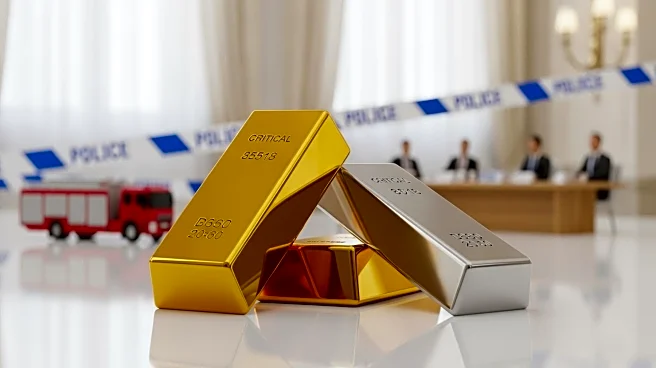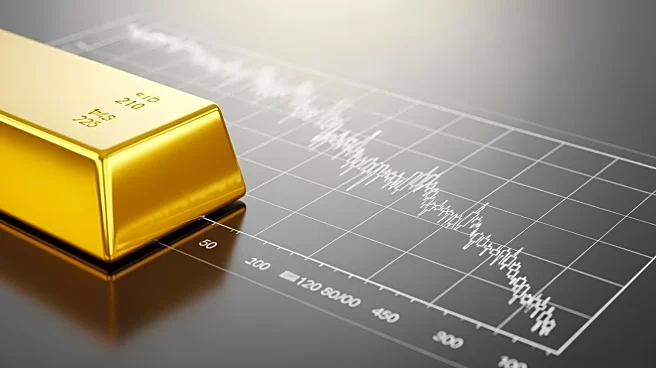What's Happening?
Mining companies are experiencing a persistent pattern of underperformance despite a surge in precious metals prices. Gold reached unprecedented heights of $2,740 per ounce in late 2024, and silver peaked
above $34, yet mining equities have failed to capture proportional gains. This disconnect is attributed to deeper structural issues within the sector. Historically, gold mining equities have captured only 30-40% of gold price gains during bull markets while experiencing 1.5-2x the downside during corrections. Recent market action in October 2025 reinforced this trend, with gold mining ETFs GDX and GDXJ experiencing severe selloffs despite gold maintaining relative strength above $4,000 per ounce. Silver miners performed even worse, with SIL and SILJ posting significant declines while silver held above $50 per ounce.
Why It's Important?
The systematic underperformance of mining equities poses significant challenges for investors seeking leveraged exposure to precious metals appreciation. Operational cost inflation pressures, capital allocation missteps, and regulatory compliance costs are key factors contributing to this trend. Mining operations face relentless cost pressures, including energy costs, specialized equipment expenses, and skilled labor shortages. Additionally, evolving environmental standards impose further operational expenses. These challenges create sustained pressure on valuations despite favorable commodity environments, leading to skepticism among institutional investors and persistent valuation discounts.
What's Next?
The mining sector's persistent underperformance has prompted industry-wide initiatives aimed at improving operational efficiency and shareholder returns through technological innovation and governance improvements. Advanced technologies such as automation and predictive maintenance systems offer potential solutions to traditional mining challenges. ESG integration provides long-term competitive advantages, attracting ESG-focused institutional capital and reducing regulatory risks. However, implementation timelines extend beyond immediate investment horizons, requiring investors to balance the sector's documented underperformance against potential rewards from successful navigation of these complex dynamics.
Beyond the Headlines
The gold-silver ratio serves as a crucial indicator for assessing the relative health of precious metals markets and their associated mining companies. Historical analysis reveals that secular bull markets in precious metals typically conclude when the gold-silver ratio approaches 15:1, indicating silver's outperformance during final bull market phases. Current ratios significantly above this historical endpoint suggest substantial room for continued precious metals appreciation, with silver potentially outperforming gold during later stages. This dynamic impacts mining company valuations and investment strategies, favoring gold miners during rising ratios and silver miners during declining ratios.











